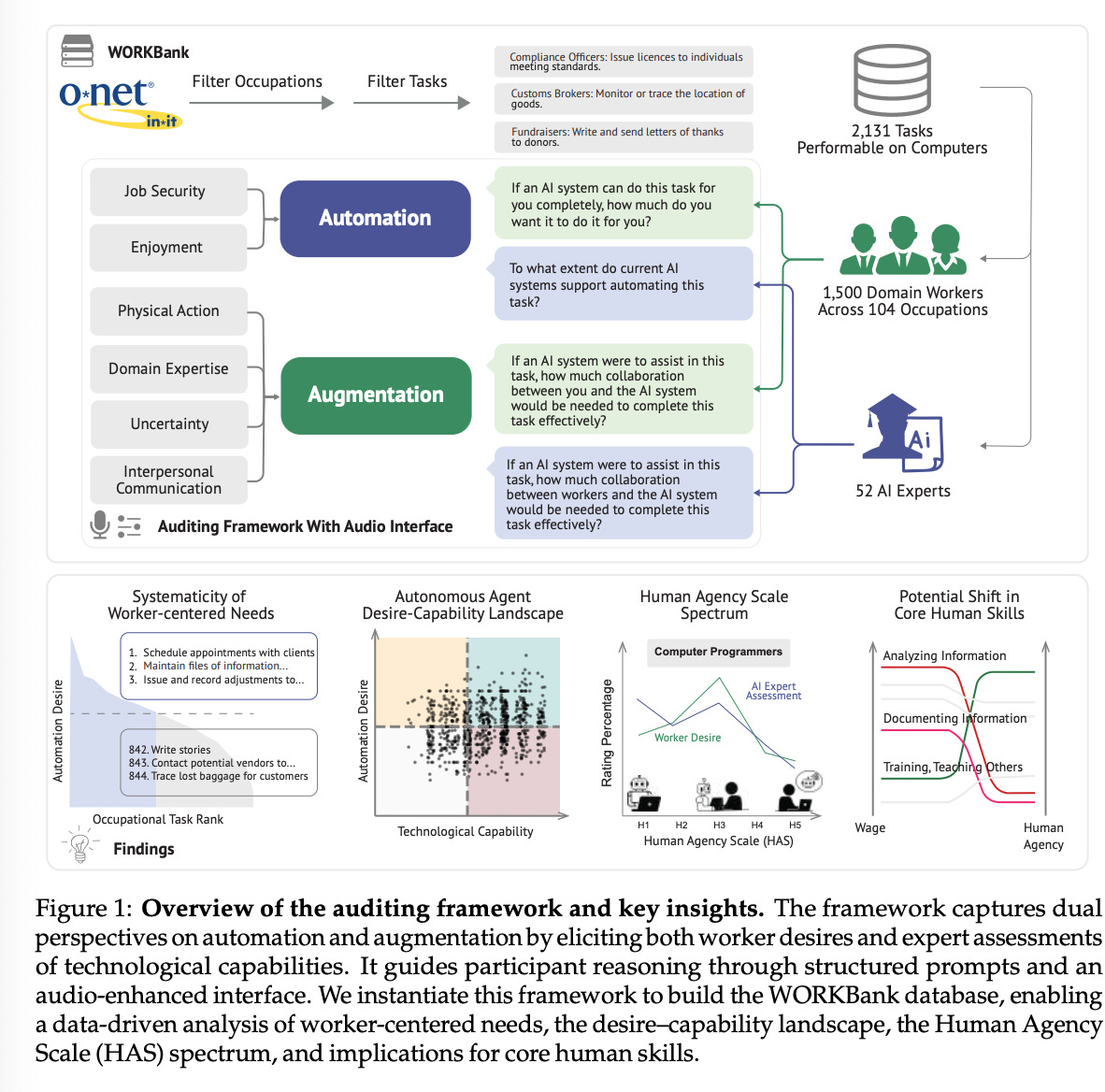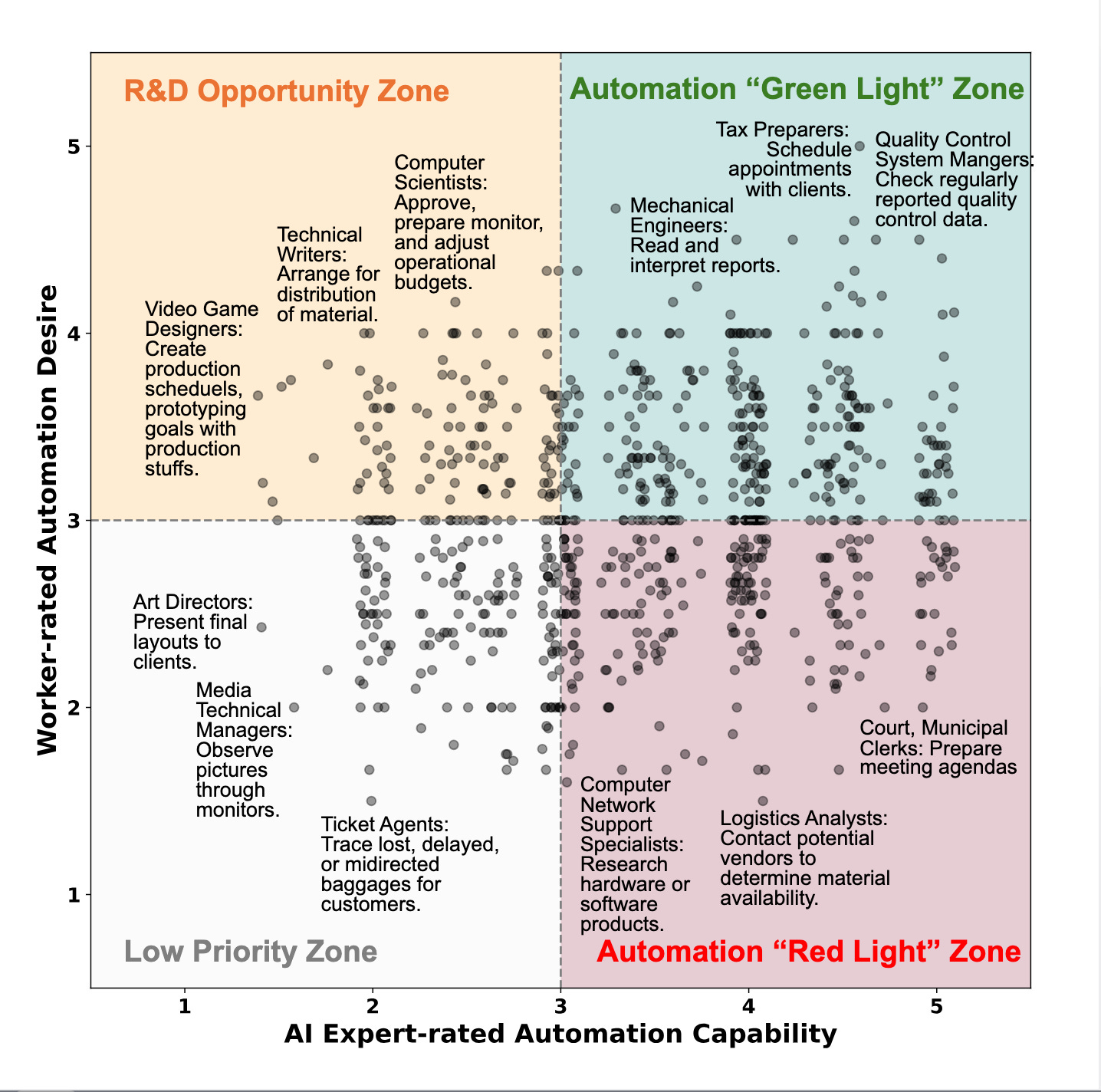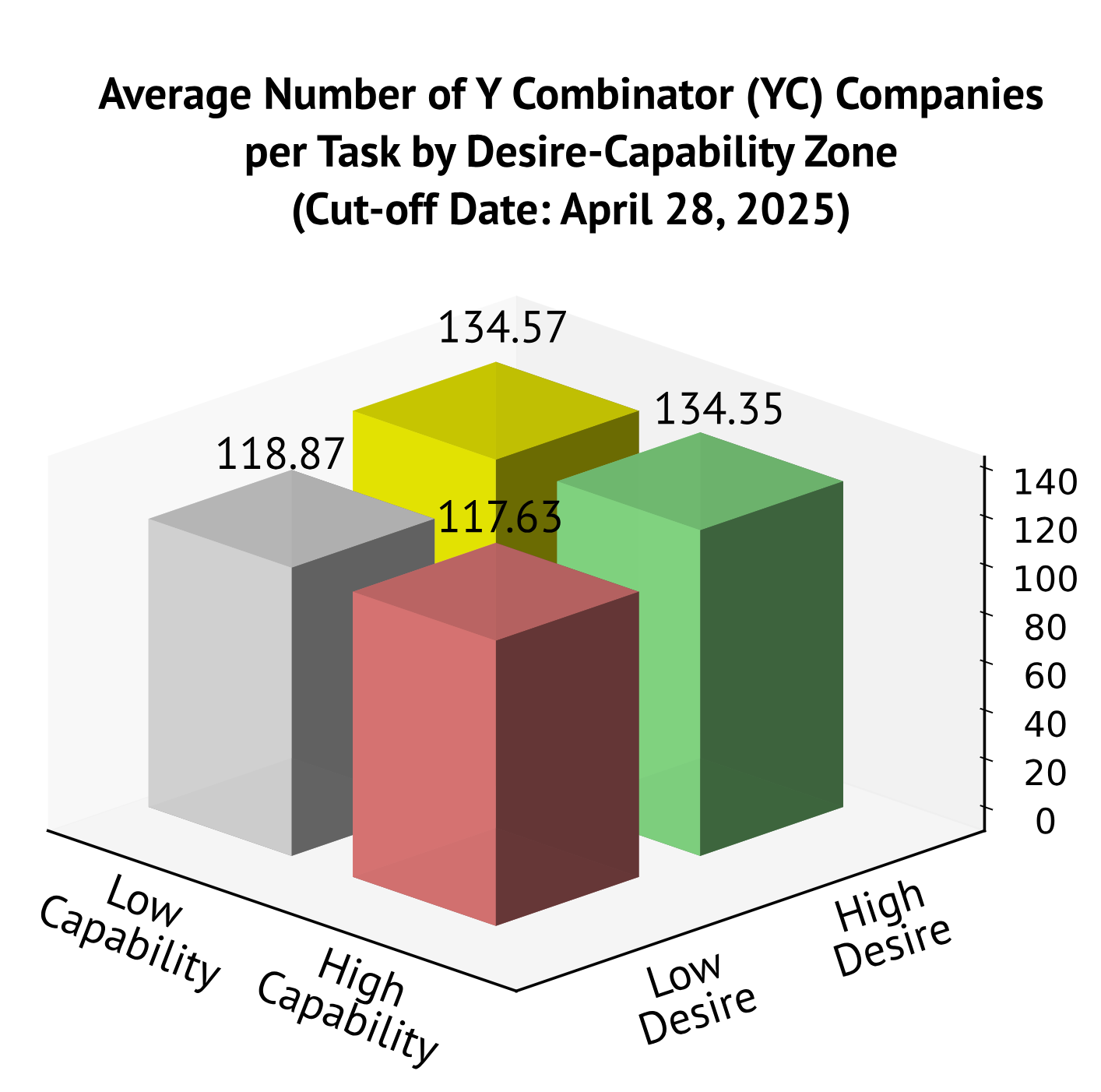Stanford's 4 AI Investment Zones: Are We Automating the Wrong Work?
What 1,500 Workers and 52 Experts across 844 tasks revealed
In our last post, we established that AI's real opportunity lies in smart deployment rather than mass replacement. Now Stanford’s recent research provides us some more data on what "smart" actually looks like.
Stanford researchers surveyed 1,500 workers and 52 AI experts across 844 tasks. Their findings suggest a surprising disconnect between current AI investments, where workers want help, and where the technology currently is.
In today’s post, we will summarize these findings and provide some insight into: Where AI should be deployed? and where investments are currently missing the mark?
What Workers Truly Want (and Resist)
Nearly half of all workplace tasks (46.1%) got positive ratings for AI automation from workers themselves.
Why do they want AI help?
69.4% want to free up time for high-value work
46.6% find tasks repetitive or tedious
46.6% see opportunities for quality improvement
Workers' biggest concerns:
45.0% lack trust in AI accuracy and reliability
23.0% fear job replacement
16.3% believe AI lacks essential human qualities
The Four Investment Zones: Are You Focusing on the Right Opportunities?
So how do we use workers’ desire for automation to guide AI investments? Stanford's framework maps AI opportunities using two simple questions: Do workers want this automated? Can AI experts confirm the technology is ready? This creates four distinct zones that should guide every AI dollar you spend.
Zone 1. “Green Light” = High worker desire + High AI capability
These are your immediate wins. Workers want these tasks automated, and AI experts confirm the technology can handle them today.
Examples:
Tax preparers want to automate "scheduling appointments with clients" - it's routine work that AI handles well, freeing them for higher-value tax strategy.
Public safety tele-communicators want to automate "maintaining files of emergency call information" because AI efficiently organizes such data.
Zone 2. R&D Opportunity = High worker desire + Low AI capability
This is where smart money should go for future competitive advantage. Workers desperately want help here, but AI experts say the technology isn't ready yet. These represent promising directions for AI research and development.
Examples:
Computer scientists want to automate "approving and adjusting operational budgets" - complex decision-making, strategic oversight, and nuanced judgment regarding financial implications current AI struggles with.
Video game designers wish they could automate "creating production schedules and prototyping goals" - human creativity, judgment, and adaptation to uncertainty that challenge today's AI.
Zone 3. “Red Light” = Low worker desire + High AI capability
Proceed with extreme caution here. AI experts say the technology can handle these tasks, but workers resist automation here. Deploying AI in these areas may lead to worker resistance or negative societal implications.
Example:
Logistics Analysts resist automating "contacting potential vendors to determine material availability", despite AI's high technological capability for this type of information gathering and communication.This resistance is likely influenced by concerns losing creative control, diminishing the "human touch" in their work
Zone 4. Low Priority = Low worker desire + Low AI capability
These tasks are less urgent for AI development. Neither workers nor AI experts see immediate potential here.
Example:
Ticket agents show little desire to automate "tracing lost, delayed, or misdirected baggage for customers" - and current AI finds this difficult due to complex, real-world problem-solving requirements.
The Investment Mismatch
One of the most salient insights from the report is that 41% of Y Combinator startup funding flows into Zone 3 and 4 (“Red Light” and Low Priority zones).
Meanwhile, Zone 1 (“Green Light” zone - immediate wins) and Zone 2 (R&D Opportunity zone - future competitive advantages) remain under-funded.
Your Next Move
The Stanford research makes the path forward clear: Smart AI deployment follows a worker-centric and technology readiness approach. The biggest opportunities exist where these factors align—not where technologists think they should.
This week, ask your team two questions:
What repetitive tasks do you wish AI could handle?
What work do you never want to give up?
Map their answers to these four zones. You'll quickly map your real opportunities. And you might discover your next competitive advantage hiding in that Zone 2—where workers want help but no good solutions exist yet.
Remember, the best way to predict the future is to help create it—preferably by solving problems people actually have.





